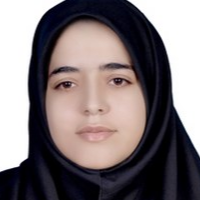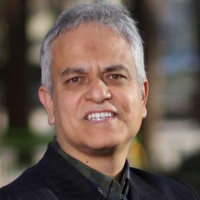International Journal of Information Technology and Computer Science (IJITCS)
IJITCS Vol. 11, No. 11, 8 Nov. 2019
Cover page and Table of Contents: PDF (size: 755KB)
A Novel Image Encryption Scheme Based on Reversible Cellular Automata and Chaos
Full Text (PDF, 755KB), PP.15-23
Views: 0 Downloads: 0
Author(s)
Index Terms
Cryptography, Cellular Automata, Reversible Cellular Automata, Image Encryption, Image Scrambling, Image Substituting
Abstract
In this paper, a new scheme for image encryption is presented. The scheme is based on a chaotic map and cellular automata (CA). CA is a collection of cells arranged in a grid, such that each cell changes state as a function of time according to a defined set of rules that includes the states of neighboring cells. The major disadvantages of cellular automata in cryptography include limited number of reversal rules and inability to produce long sequences of states by these rules. In this paper, reversible cellular automaton is presented and used to solve this problem. The presented scheme is applied in three individual steps. Firstly, the image is blocked and the pixels are substituted by a reversible cellular automaton. Then, image pixels are scrambled by a chaos map that is produced by an elementary cellular automata and finally the blocks are attached and pixels are substituted by an individual reversible cellular automaton. Due to reversibility of used cellular automata, decryption scheme can reversely be applied. The experimental results show that encrypted image is suitable visually and this scheme has satisfied quantitative performance.
Cite This Paper
Zeinab Mehrnahad, AliMohammad Latif, "A Novel Image Encryption Scheme Based on Reversible Cellular Automata and Chaos", International Journal of Information Technology and Computer Science(IJITCS), Vol.11, No.11, pp.15-23, 2019. DOI:10.5815/ijitcs.2019.11.02
Reference
[1]Jolfaei, A. Mirghadri, “A novel chaotic image encryption scheme using chaotic maps,” ADST Journal, vol. 2, 2011, pp. 111-124.
[2]T.Kumar, S. Chauhan, “Image cryptography with matrix array symmetric key using chaos based approach” International Journal of Computer Network and Information Security, vol. 11,2018, p.60.
[3]D.Mewada, N. Dave, and R.K. Prajapati, “A Survey: Prospects of Internet of Things Using Cryptography Based on its Subsequent Challenges,” Australian Journal of Wireless Technologies, Mobility and Security, vol. 1, 2019, pp.28-30.
[4]S.S. Moafimadani, Y. Chen, and C. Tang, “A New Algorithm for Medical Color Images Encryption Using Chaotic Systems,” Entropy, vol. 21,2019, pp. 577.
[5]H. Gao, Y. Zhang, S. Liang, and D. Li, “A new chaotic algorithm for image encryption,” Chaos, Solitons & Fractals, vol. 29, 2006, pp. 393-399.
[6]X. Xian, J. Liu, “Application of Chaos Theory in Incomplete Randomized Financial Analysis,” vol. 2, 2019, pp.3-5.
[7]A. Ding, W.Q. Yan, and D.X. Qi, “Digital image scrambling technology based on Arnold transformation” Journal of Computer-aided design & Computer Graphics, vol.4, 2001, pp. 338-341.
[8]Y. Luo, J. Yu, W. Lai, and L. Liu, “A novel chaotic image encryption algorithm based on improved baker map and logistic map,” Multimedia Tools and Applications, 2019, pp.1-21.
[9]Z.H. Guan, F. Huang, and W. Guan, “Chaos-based image encryption algorithm,” Physics Letters A, vol. 346, 2005, pp. 153-157.
[10]D.A. Guardeno, “Framework for the Analysis and Design of Encryption Strategies Based on Discrete-Time Chaotic Dynamical Systems,” Doctoral Thesis, Universidad Politecticnica De Madrid, 2009.
[11]J. Von Neumann, “Theory of self-reproducing automata,” University of Illinois Press, 1966.
[12]J. Jin, Z.H. Wu, “A secret image sharing based on neighborhood configurations of 2-D cellular automata,” Optics & Laser Technology, vol.44, 2012, pp.538-548.
[13]M. Ahangaran, N. Taghizadeh, and H. Beigy, “Associative cellular learning automata and its applications,” Applied Soft Computing, vol. 53, 2017, pp.1-18.
[14]Z. Eslami, S. Razzagh, and J. Zarepour Ahmadabadi, “Secret image sharing based on cellular automata and steganography,” Pattern Recognition, vol. 43, 2010, pp. 397-404.
[15]P.L. Rosin, “Image processing using 3-state cellular automata,” Computer Vision and Image understanding, vol. 114, 2010, pp. 790-802.
[16]Kauffmann, N. Piché, “Seeded ND medical image segmentation by cellular automaton on GPU,” International Journal of Computer Assisted Radiology and Surgery, vol.5, 2010, pp.251-262.
[17]Z. Eslami, J. Zarepour Ahmadabadi, “A verifiable multi-secret sharing scheme based on cellular automata,” Information Sciences, vol0180, 2010, pp. 2889-2894.
[18]Y. Ruisong, L. Huiliang, “A novel image scrambling and watermarking scheme based on cellular automata,” International Symposium on Electronic Commerce and Security, 2008, pp.938-941.
[19]F. Qadir, M. Peer, and K. Khan, “Digital image scrambling based on two dimensional cellular automata,” International Journal of Computer Network & Information Security, vol.5, 2013, pp. 36-41.
[20]J. Jin, “An image encryption based on elementary cellular automata” Optics and Lasers in Engineering, vol. 50, 2012, pp. 18396-1843.
[21]A. Abdo, S. Lian, L. Ismail, M. Amin, and H. Diab, “A cryptosystem based on elementary cellular automata” Communications in Nonlinear Science and Numerical Simulation, vol. 18, 2013, pp. 136-147.
[22]X. Wang, D. Luan, “A novel image encryption algorithm using chaos and reversible cellular automata,” Communications in Nonlinear Science and Numerical Simulation, vol.18, 2013, pp. 3075-3085.
[23]F.K. Mohamed, “A parallel block-based encryption schema for digital images using reversible cellular automata,” an International Journal of Science and Technology, vol. 17, 2014, pp. 85-94.
[24]S. Wolframe, “Theory and Application of Cellular Automata” Singapore: World scientific Publishing, 1986.
[25]M. Esnaashari, M. Meybodi, “A novel clustering algorithm for wireless sensor networks using irregular cellular learning automata” in International Symposium on Telecommunications, 2008, pp. 330-336.
[26]S. Roy, “A study on delay-sensitive cellular automata,” Physical A: Statistical Mechanics and its Applications, vol. 515, 2019, pp.600-616.
[27]M. Medenjak, V. Popkov, T. Prosen, E. Ragoucy, and M. Vanicat, “Two-species hardcore reversible cellular automaton: matrix ansatz for dynamics and no equilibrium stationary state,” arXiv preprint arXiv, 2019, pp.1903.10590.
[28]S. Yingri, Y. Wo, and G. Han, “Reversible cellular automata image encryption for similarity search,” Signal Processing:Image Communication 72, 2019, pp. 134-147.

